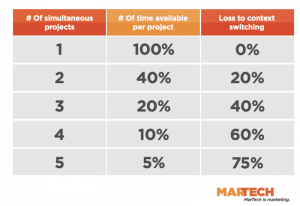Unfortunately when it comes to graphic designers, all too often they can fall into the trap of not thinking like the clients that they serve. Instead of thinking about the business implications of their work, they get caught up in the artistic expression, forgetting about their client’s goals and focusing instead on the “artistic” value of their creation.
An effective user interface designer, in contrast, will be working on solutions to problems. Their process is much different, in that it be will be based on user research and best practices, instead of ‘just going with of what feels right’. They will arrive at solutions backed by data that are much more likely to succeed. Effective user interface designers will also master a set of skills that goes beyond design.
These 6 pro tips will help you be able to improve yourself as a designer and help you improve your interactions with your clients.
Communicate
Make sure you communicate regularly and effectively with your client. Regardless of what you are designing, you will want to maintain regular contact with your client. Share draft versions of your work with them regularly so that they will be able verify if your work is in-line with their expectations. Working a project to completion before a client tells you it isn’t right, not only wastes your time but it wastes the client’s time as well. Design projects should be shown to clients early to avoid spending time on concepts that the client isn’t interested in pursuing.
Have a plan
Have a plan for each and every design project you undertake. Start with developing an understanding of what your client wants to accomplish. What are their objectives? Your plan should be based on their business objectives. Understand what benefits the client hopes to gain by contracting your services. Once you understand what the client wants to accomplish, develop a plan for how to fulfill those objectives.
Understand how you will use user research, data, trends and/or best practices to support the design decisions you will be making. Start with the data before you get to the design and then consider how design can be used to augment and amplify your decisions. Consider the approach, tone and voice that will best meet the client’s objectives. Make sure you share your plan with your clients so they know what to expect and can point out any areas that differ from their expectations.
Think in terms of benefits, not features
Nobody enjoys a bloated app stuffed with so many unnecessary features that it is difficult to use. Focus on thinking in terms of app benefits instead. How can this app benefit the user? How can this interface improve the user experience? How can I streamline this process and save the user time? Everything from deciding what colors to use because of the reaction they elicit to deciding how much white space to use should considered in terms of how it can benefit not only the user experience but your client’s goals. Think about how you can use specific imagery to reinforce the brand image. Think about how you can you create a simple but beautiful interface that solves existing interface problems and improves the user experience.
Always remember context
When it’s time to design remember that your interface design doesn’t work independently of the world around it. Ask yourself, why is a customer using this app? What problem are they trying to solve? What situations will they be using this app in? Does this flow with established branding? While users are engaged with your app, have the application deliver content based on the context. Think about what a user will need to accomplish their task on any screen. What will they expect to see? What tools do they need?
Remove the items users don’t need to complete the task at hand and leave only the essential items. Less clutter will make the interface easier to use. It will also be quicker because users won’t have to scan through as many elements. Less clutter results in a cleaner interface which increases clarity for users. By considering the context each interface screen, it can help you improve the usability of each screen.
Become an expert
Just because you have design skill doesn’t necessarily mean you are a good interface designer. Good interface design is about much more than design skill alone. Study and learn, become an interface expert who understands best practices and best processes. Along with improving your skill, improve your process. You must be able to understand what the right path is for your client. One way to do this is by working to try to understand what a client is trying to accomplish when they make requests. Often if designers don’t understand the end goal for requests, they are not able improve the process to help them get there. Ask probing questions to understand the business benefit they are trying to achieve and you most likely will be able to develop a better process to get them there.
Learn how to deal with suggestions
As a designer you will find that not every client likes everything you do. Clients are going to ask questions, make suggestions and tell you that they don’t like some of your designs. Don’t take it personally. If you missed the mark, just accept it and then be willing to adjust the direction based on their feedback. However, if the client’s suggestion is something that might reduce the effectiveness of the design, explain the best practices, design methodology or user data that supported your decision and was the basis for your approach. Let them know why you made decisions and how they will benefit their goals.
Don’t take their suggestions as a negative reflection on you; see them as a way to improve the interface. Do not get defensive. Take time to understand and address their concerns, then establish a common ground. Use this to work towards a solution. Remember that you are all on the same team working towards their business objectives.
Digital & Social Articles on Business 2 Community(28)




